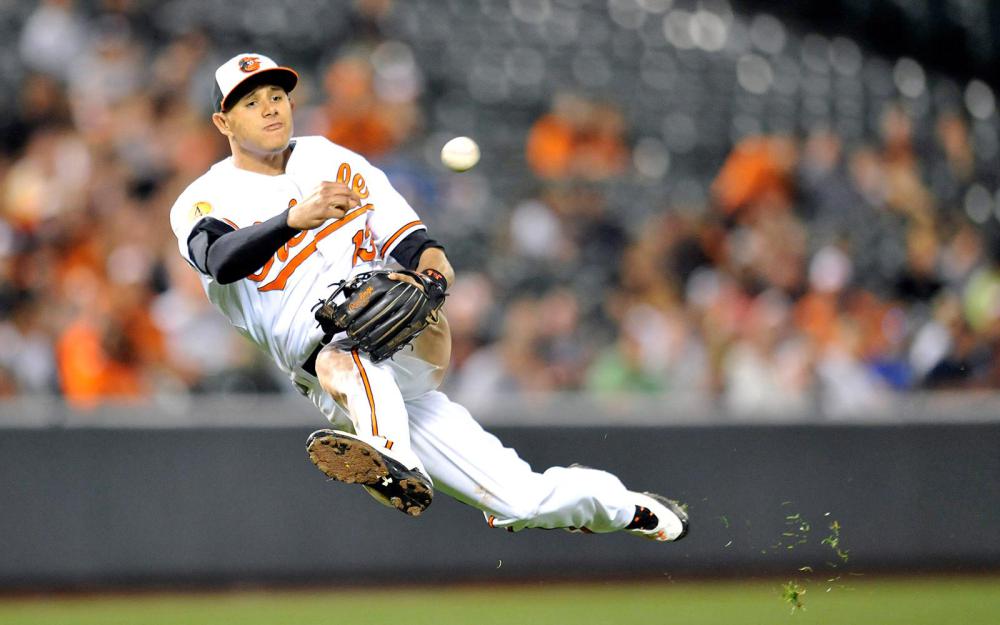The fantasy football season may be coming to a close, but the fantasy baseball season is just starting! Those of you who follow our show on SiriusXM Fantasy Sports Radio know that our sabermetric analysis is among the best in class, particularly when it comes to integrating cutting edge statistics like barrels and hard contact rate. Last season, one of the most successful studies I performed was my mid-season HR/FB regression analysis. In that study, I looked at every player's Hard Hit Rate (Hard%), In-Zone Contact Rate (Z-Contact%) and Barrels and ran a multiple regression analysis to determine the correlation factor of those three statistics in conjunction with HR/FB rate. In other words, how likely improved numbers in Hard%, Z-Contact%, and Barrels will also result in an improved HR/FB rate. The results were eye-opening, with those three statistics contributing to a 0.61 correlation rate, which is one of the highest correlations you will find among related baseball statistics (where 0 is no correlation and 1 is perfect correlation).
Before we dig into these numbers for the full 2017 season, it's important we make the distinction between statistics that are descriptive of past performance and statistics that are predictors of the future, while also recognizing that some statistical analysis can be both a descriptor and a predictor. As you can read in here, we know that Hard% is a good predictor of future success, while Z-Contact% by itself has very little correlation to any of the other statistic, making it a better descriptor than predictor when used individually. However, by combining the strengths (and weaknesses) of all the variable statistics (Hard%, Z-Contact, and Barrels), we create a powerful way to both measure past performance, as well as help paint aggregate predictive trends related to HR/FB rate.
Since these metrics have a 0.61 correlation rate, that means that as they rise, the dependent variable (HR/FB rate, in this case), will also likely rise and vice versa. So why do you, as a fantasy owner, care about any of this?
As we head into the baseball season, we must be constantly scouring the market for inefficiencies in pricing and average draft position. This HR/FB regression analysis will help you determine which player's 2017 performances were real and which ones were outliers (positively and negatively). For season long players, it'll give you a list of players to avoid unless they are a value, while also providing you targets to watch fall to you later in drafts. On the DFS side, it'll help uncover potential pricing inefficiencies in the first couple of weeks of the season since many sites heavily weight their pricing on "recent" performance.
Note: My sample included all players with 100+ plate appearances in 2017, but the smaller sample sizes (in terms of plate appearances) do drive variance in the results.
Figure 1: Players Most Likely to See Unfavorable Regression to HR/FB Rate in 2018
Figure 2: Players Most Likely to See Favorable Regression to HR/FB Rate in 2018





































Brad
Jan 19, 18 at 10:24 PM
Is this replacing Anthony's blog that is similar to this one? I know he's published that every year and it has been extremely helpful and accurate. Thanks!
Michael Waldo
Jan 19, 18 at 10:24 PM
Hi Brad,
Not replacing, just supplementing. Anthony looks at a myriad of other factors above and beyond the three I discuss above. Think of this piece as merely a teaser.
Arthur O. DuBois
Jan 19, 18 at 10:24 PM
Your article is not clear in my view. Regression is usually considered a bad thing. Unfavorable Regression must be good, right? That is very, very odd use of terminology IMHO.
Jason
Jan 19, 18 at 10:24 PM
@Michael - I've heard that the hard-contact measurement was "broken" in 2017 in Detroit. Are you confident in Castellanos's hard contract % that you're using, or is it possible that it's inflated based on a broken hard-contact measurement system in Detroit (I don't know how it's determined, so I don't know if it's a machine, a computer, or something else).
@Arthur - regression is a statistical term meaning "returning to normal", so one can "regress" in either a positive direction or a negative direction - it would all depend on where the player started compared to where "normal" should be for them.
MICHAEL MAGID
Jan 19, 18 at 10:24 PM
So do you see Castellanos as a Top 10 3B or better? Maybe Top 5 or 6? I can keep him as a 17th round pick in this year's draft in a 12 team mixed 6x6 OBP league. Thoughts?
Michael Waldo
Jan 19, 18 at 10:24 PM
Hi Arthur,
While you’re right that regression can often be used to describe something getting worse, regression in the statistical world has a different meaning. Here’s a good article that discusses that topic.
https://www.fangraphs.com/library/principles/regression/
Michael Waldo
Jan 19, 18 at 10:24 PM
Jason,
This is fascinating. Looking at the Detroit numbers, they’re high across the board. Do you have a link to where you read that information?